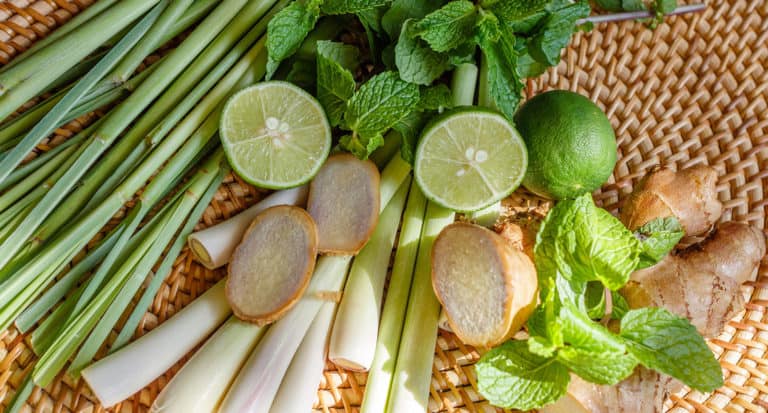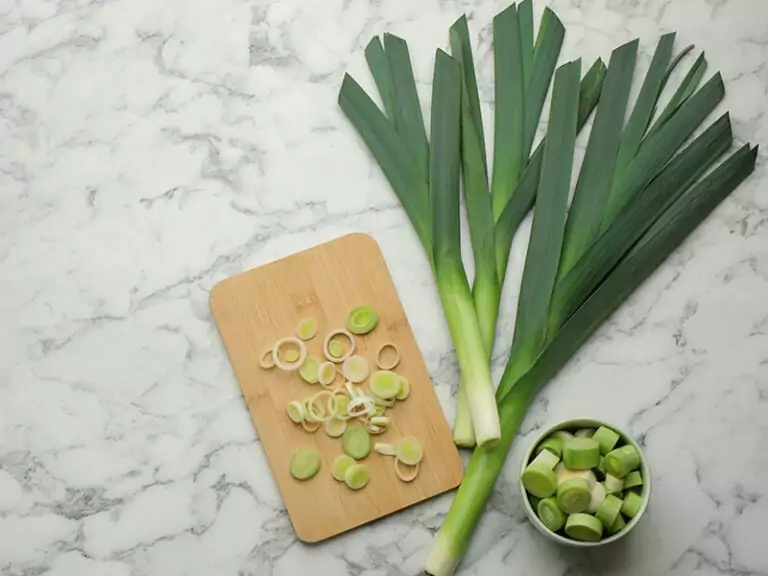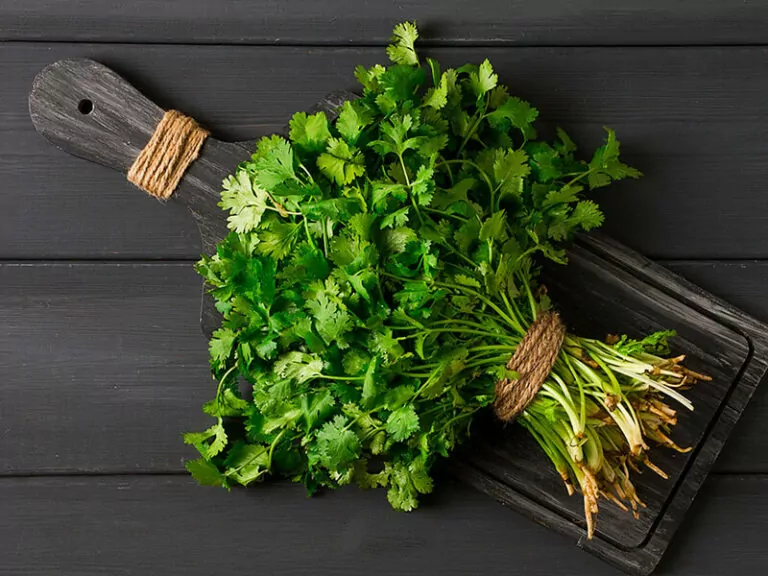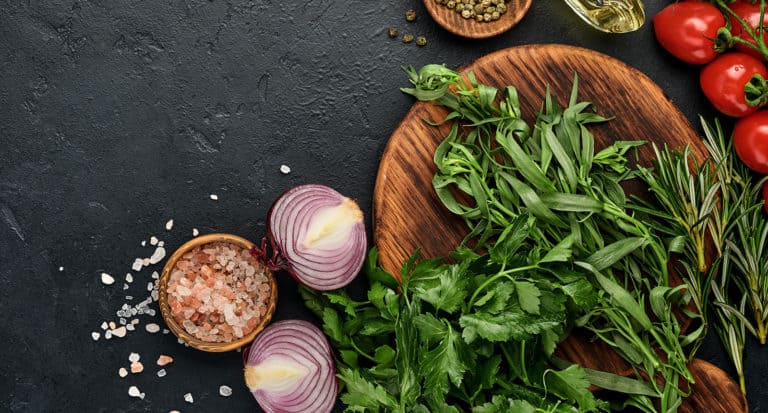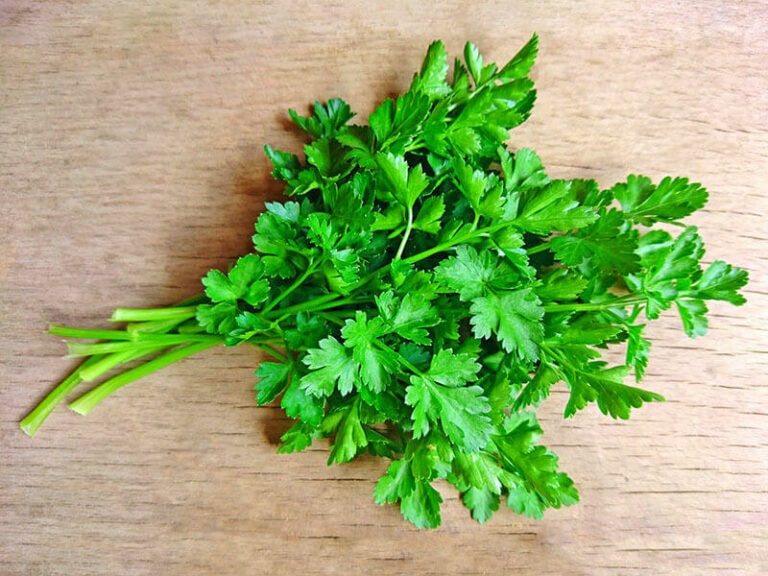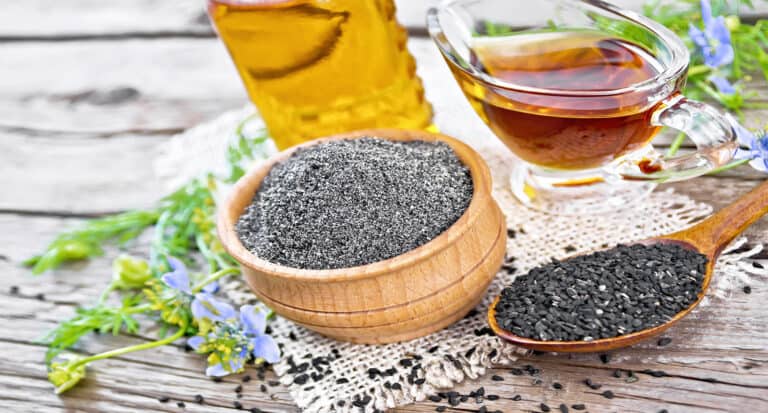As with other herbs, fresh tarragon vs dried tarragon is a delicate matter. It may seem trivial, but if you don’t know how to use the two varieties, you may end up ruining your food. The reason is that each type has its own dosage and properties.
In this post, I’m going to attempt to navigate you through this unfamiliar terrain. In the end, you will have a better grasp of how to use tarragon in cooking effectively. Let’s embark on this journey to the fragrant world of tarragon!
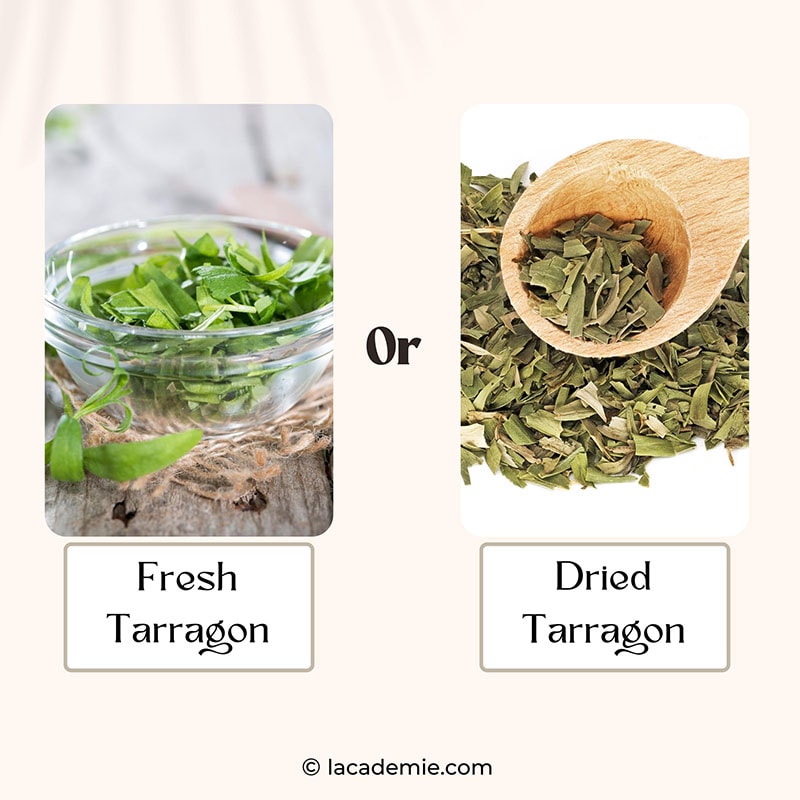
What Do I Need To Know About Tarragon?
Before delving into fresh and dried tarragon, let’s start learning about the herb in general. Tarragon is no stranger to you, but there are many things you will find exciting.
History Of Tarragon
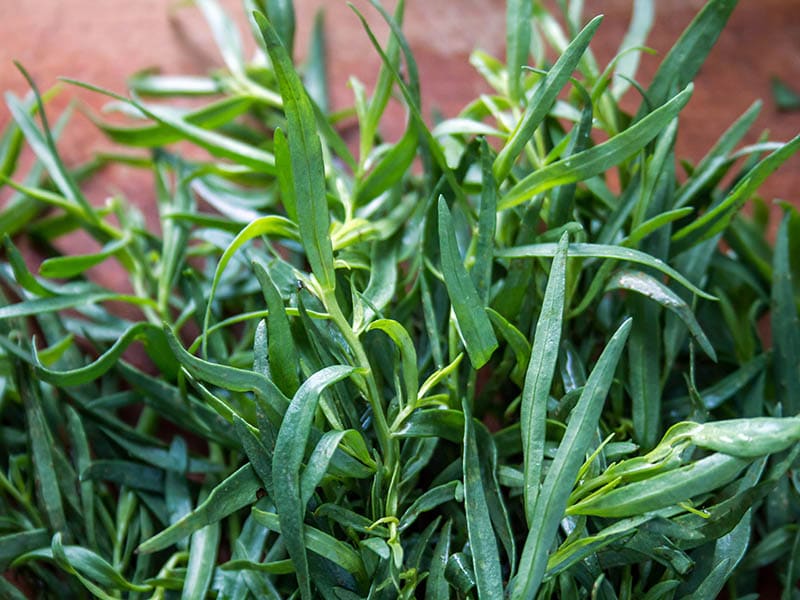
Familiar as tarragon is today, it is a relatively new thing, being cultivated for only around 600 years. People believe that when the Mongol hordes invaded Europe, they didn’t only bring horror; they also came with tarragon.
The plant is native to Siberia (1) and was brought to Europe in the 13th century. Thus began a tale of “the student has become the master”. I will shortly explain how the European descendant is superior to the Siberian precursor in every aspect.
The French became particularly enamored with tarragon. They grew the herb widely and devised a lot of sauces and dishes with tarragon at the center. As a result, when French cuisine grew in fame and polarity, so did tarragon.
The Taste Of Tarragon
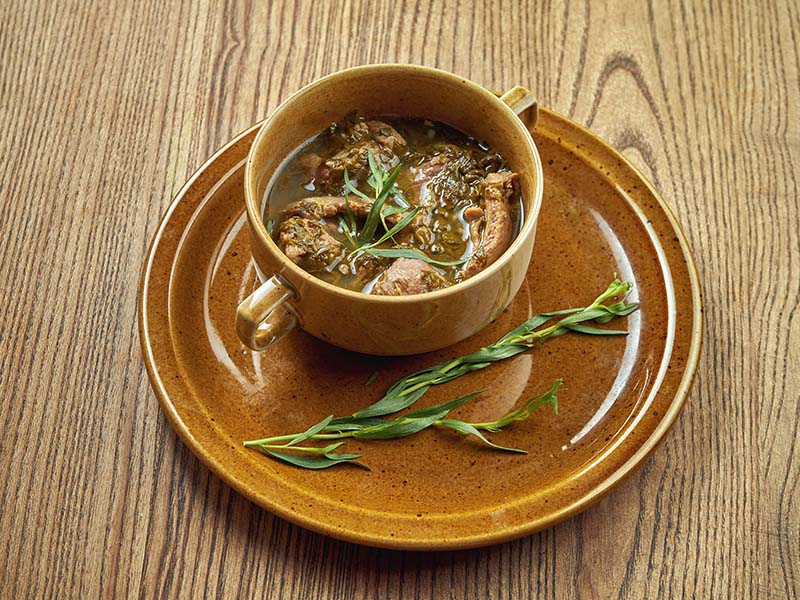
Tarragon has a floral and powerful scent. It is so strong that the herb may fall into the category that certain people love it dearly while others detest it. However, the aroma also has pleasant undertones of mint and vanilla.
When describing tarragon’s flavor, one can say it’s generally sweet and rather bitter. It is like a combination of licorice, fennel, and anise but more intense than any of the three. Actually, you may make your food rather bitter if you sprinkle too much tarragon over it.
Tarragon Lifespan And Harvesting
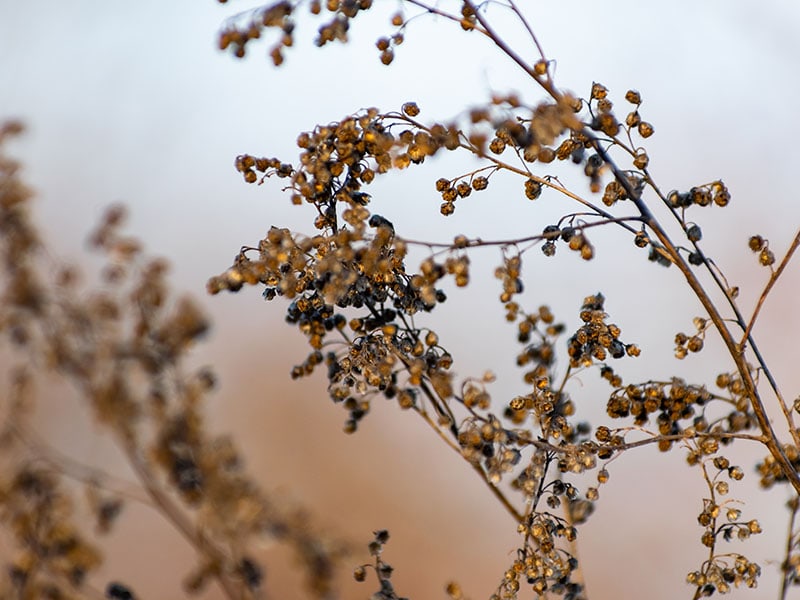
Tarragon is a perennial herb. It can grow in the wild or be cultivated in your garden. A plant can stay productive for 3 to 4 years before having to be replaced.
The best time to harvest is spring, summer, and early fall. You should use a sharp garden scissor to trim the stems or sprigs. Make sure that you spare enough leaves for the plant to survive.
Fine tarragon can only be grown from cut stems or roots. The plant’s twisting, snake-like root system gives it the name. Tarragon is derived from a Latin word meaning “little dragon”.
Check out the correct way to harvest French tarragon here.
Fresh Tarragon Vs Dried Tarragon
With enough information about tarragon at your fingertip, let’s get to the crux of the problem. Which one is better, fresh tarragon or dried tarragon? Can dried tarragon be a swap-in ingredient for fresh tarragon? Well, it depends on your needs.
Texture, Color, And Flavor
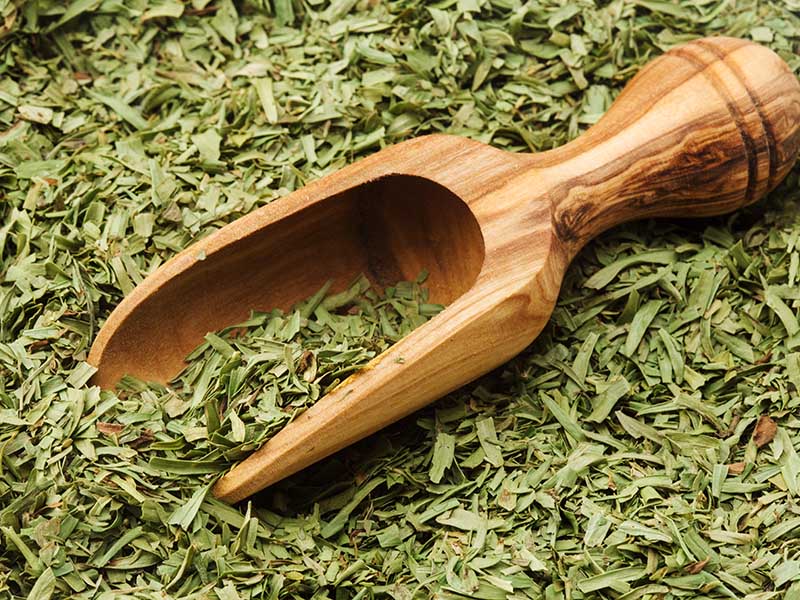
Fresh tarragon leaves are long, slender, perky, and bright green. Meanwhile, depending on how it is dehydrated, dried tarragon can range from pale green to a brownish shade in color. It is also crisp, coarse, or even ground into powder.
As for the smell, both fresh and dried varieties are highly aromatic. But you can expect dried tarragon to have a weaker scent that is a little burned and smoky.
Like other herbs, tarragon owes its fragrance to the essential oil inside it. A significant portion of this oil is lost in the drying process. So it’s no surprise that fresh tarragon has a livelier, more diverse, and delicate flavor than when it is moistureless.
However, dried tarragon makes up for the lack of diversity with its intensity. Dried tarragon is much more potent than the fresh one. Therefore, while the two can be used interchangeably, you should be careful with the dosage.
The Golden Ratio
If you want to switch dried tarragon for the fresh variety, follow this rule of thumb. One part of dried tarragon is as strong as three parts of fresh tarragon. This equation extends to many kinds of herbs as well.
Here is another way to illustrate it. You can replace a teaspoon of dried tarragon with a tablespoon of the fresh stuff.
Understand the science of how much to substitute dried herbs for fresh herbs, including tarragon.
Durability

Dried tarragon is indeed inferior to the fresh one in terms of flavor. At the same time, it is much better at keeping its taste in harsh conditions. That means dried tarragon will taste the same even after you’ve stored it for months or cooked it slowly for hours.
By contrast, don’t expect such constancy from fresh tarragon. It loses flavor as quickly as it loses moisture. And long exposure to heat will turn its sweet taste into a bitter, biting, pungent sourness.
Availability
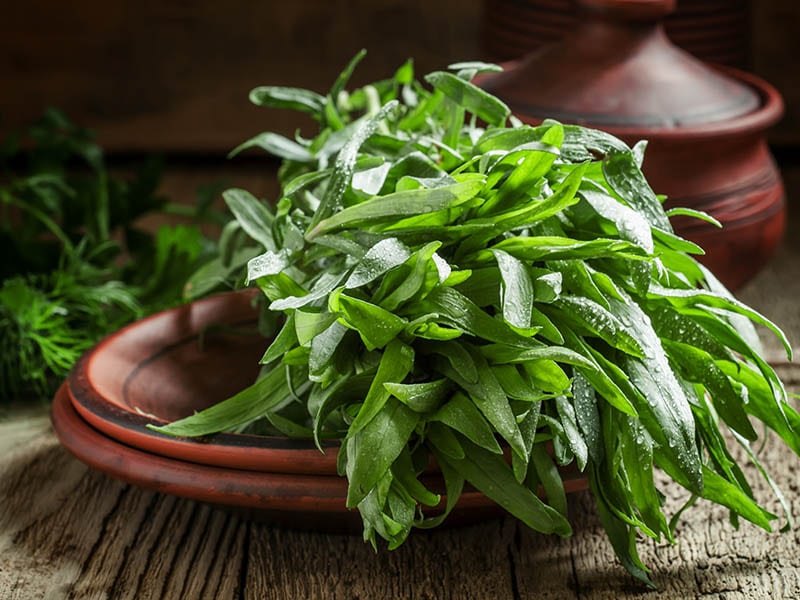
A trip to your local market will tell you that fresh tarragon isn’t always around, and its price isn’t cheap. Without the luxury of a garden to grow your own, you can’t have a reliable supply of fresh tarragon. But dried tarragon is much easier to get your hands on all the time.
Shelf Life And Storage Condition
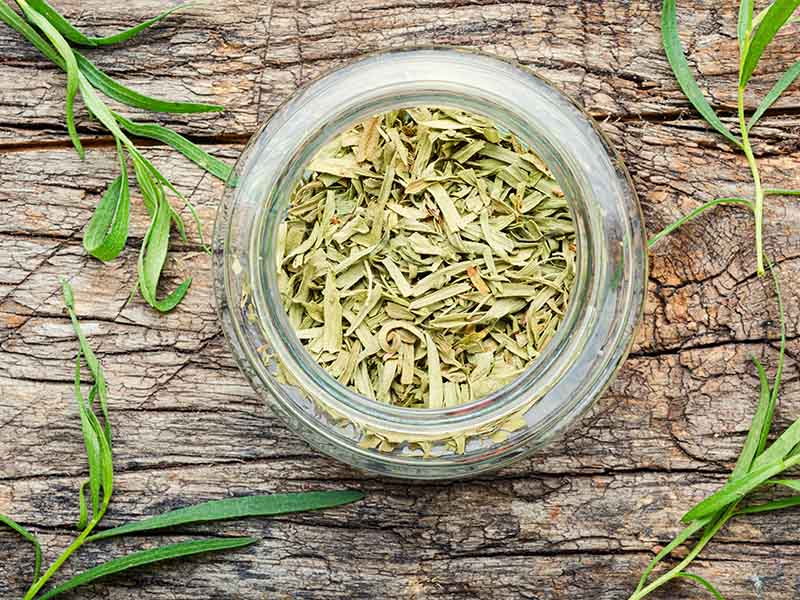
Fresh tarragon isn’t something that will last a long time. You must keep it in a refrigerator, preferably in a damp paper towel or in a plastic bag. The maximum time is 10 to 14 days, but you should expect some loss of flavor before that.
On the contrary, dried tarragon has a long shelf life of up to 1 or 3 years. It doesn’t need refrigeration; you only need to store it somewhere dark and cool such as your cupboard. Don’t forget to close the lid tightly on the tarragon container after use.
Suitable Dishes For Each Variety
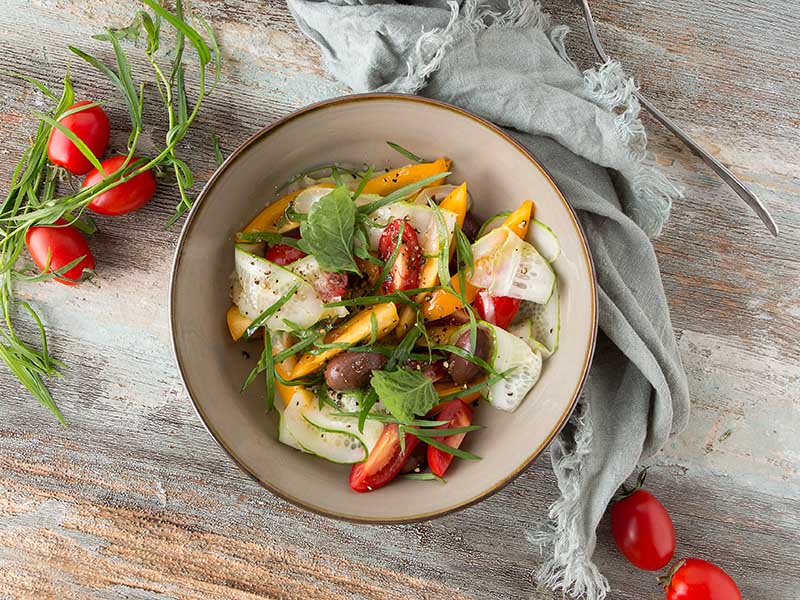
In many recipes, the two varieties can substitute for each other. The only thing you need to remember is that if the dish asks for one spoonful of dried tarragon, replace it with three spoonfuls of tender tarragon.
However, due to the flavor and durability disparities, some recipes should go with fresh tarragon while others are better with the dried form.
Generally speaking, you should add fresh tarragon to dishes that involve little cooking or no use of heat at all. Good choices include preparing meals with salads, bearnaise sauce, pickles, etc.
However, if you use fresh tarragon as a garnish to decorate a finished dish, that is also acceptable. But you have to serve it right away.
On the other hand, dried tarragon is excellent for foods that have to be cooked for a long time. Braised dishes and stews are some obvious examples. You can also use dried tarragon to season meat, fish, poultry, and so on before cooking it.
Popular Methods To Dry Tarragon
Suppose that you are so good at gardening that you grow more fresh tarragon than you can use, what should you do? Overwhelming your dish with excessive tarragon isn’t an option. Instead, let’s make some dried tarragon.
As you can see, dried tarragon can last for a long time. In some situations, it is even superior to the fresh form in taste.
First, you need to discard any dead or damaged leaves and stems. Then wash your tarragon with water to remove dirt and chemicals, and let it dry thoroughly. Now, let’s choose one of the drying methods that I’m going to introduce.
Hanging Dry
This method is safe and easy and can apply to a large quantity of tarragon. But it is a little time-consuming and not suitable for humid places with little dry air around.
Step 1: Tie Your Herb Into Bunches
Tie the stems of your tarragon with a string. Arrange them into small bundles (about the size of your wrist). Keep the bundles far apart enough for the air to flow.
If possible, you can cover the bundles with a big non-plastic bag to protect them from dust. But make sure that the herb doesn’t touch the inside of the bag. Poke holes in the bag.
Step 2: Let The Herb Hang Dry
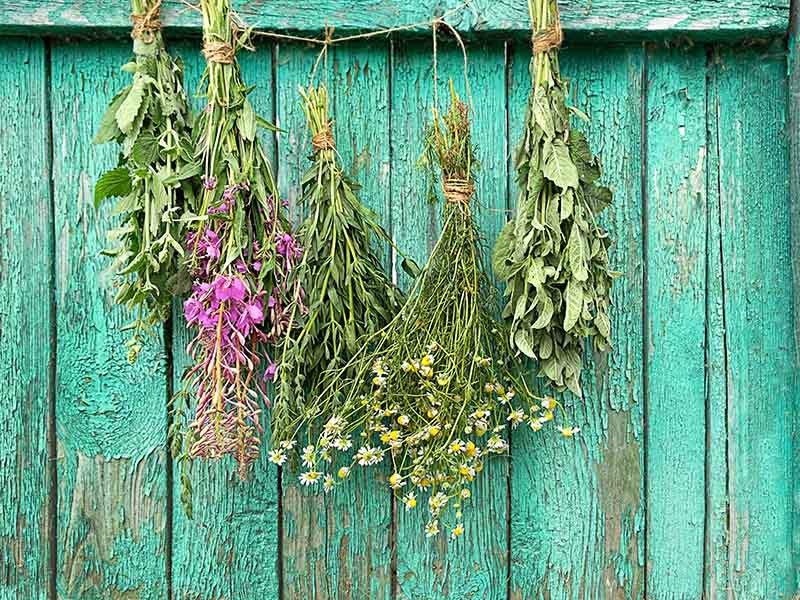
Hang the bundles upside down in a well-ventilated place that is out of direct sunlight. Hanging downward causes the essential oil to move from the stems to the leaves.
Leave the bundles there for 1 to 2 weeks or until the leaves become crisp and brown.
When your tarragon is completely dehydrated, remove the leaves from the stems and put them in an airtight container.
Dive into this easy way to dry herbs without having to use fancy machines.
Rack Drying
This still uses dry air to dehydrate tarragon, but it is much faster.
Step 1: Prepare The Drying Rack
Make a drying rack by stretching a piece of cheesecloth or kitchen towel over a wooden frame, or buy a tray. Arrange your tarragon on the rack.
Step 2: Let The Herb Rack Dry
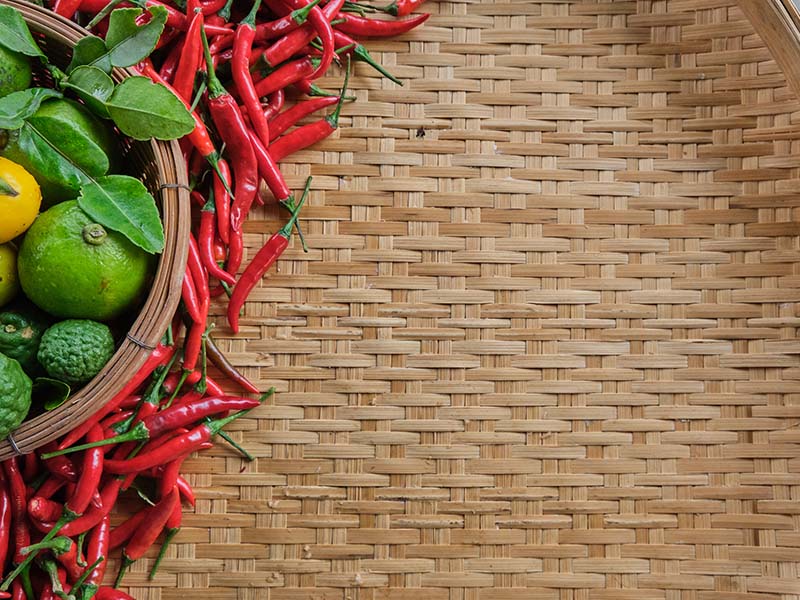
Put the tray in a warm, airy place with no sunlight. Frequently stir the stems and leaves. After 2 to 3 days, remove the dried leaves and store them in an airtight container.
Oven Drying
Just like how there are several ways to dry basil in ovens, you can speed up the drying process of your tarragon with an oven as well. But it can accidentally scorch your herb if you aren’t careful enough, so always stay alert when using it.
Step 1: Prepare The Baking Tray
Remove the leaves from the stems and space them out on a cookie sheet or a cooling rack.
Step 2: Dry The Herb In The Oven

Set the oven at the lowest available temperatures, at 180 degrees Fahrenheit or less. Dry the leaves in the oven for 1 hour. Check and turn the leaves over every 30 minutes.
When the leaves are deprived of moisture, let them cool before getting them out and storing in a container. Be careful not to let them burn out.
Microwave Drying
This method is even faster than oven drying. But the risks are also bigger. You should also remember that you can only dry a small amount of tarragon at a time with this method.
Step 1: Prepare The Microwave Tray
Place a thin layer of tarragon leaves on a ceramic, glass, metal, or silicon plate. You should wrap the herb in two sheets of towel paper before putting it on the plate.
Step 2: Dry The Herbs With The Microwave

Turn on the microwave and set it on high. Check and turn over the tarragon every 30 seconds.
Stop when the leaves are crisp enough. Remember, it is easy to burn tarragon if you exceed the time.
Using A Dehydrator
This machine is built for drying stuff, so there is no doubt about the result. If you have a dehydrator, just follow the manual, and everything will be smooth sailing.
Check out those awesome tips about how to use a dehydrator to dry herbs.
Rehydrating Dried Tarragon Is Easy
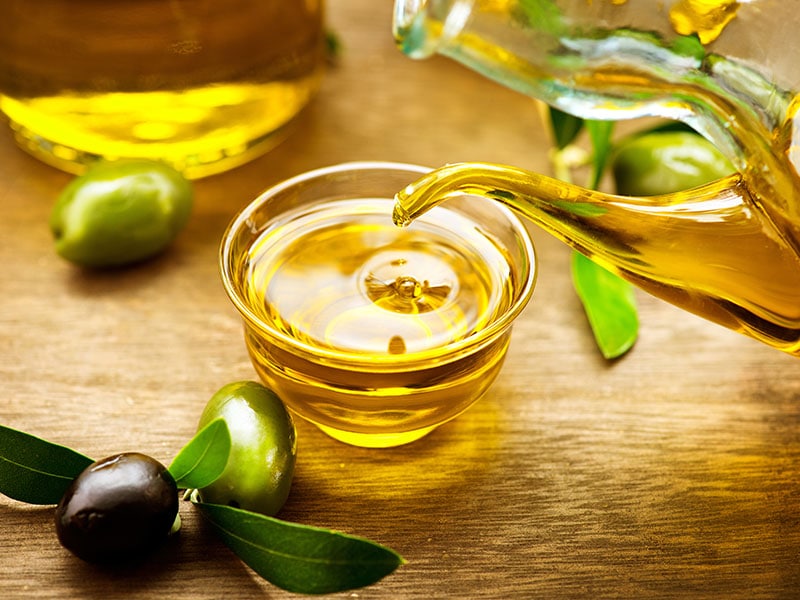
There are many reasons why you want to moisturize your dried tarragon. You may want to make it softer to eat or to reclaim a portion of the original fresh flavor. But remember that you can’t recover all the nuances of tender tarragon.
All you need to do is to immerse dried tarragon in warm water in a bowl for 10 minutes. Strain the herb and use it in cooking right away. If you want to make a salad or sauce, you can drench dried tarragon in oil or vinegar for a stronger flavor.
If you activate dried tarragon with water, you can improve its flavor by adding slices of orange, lemon, or lime peel to the water. The essential oil in the peel will flow to the herb and make it more flavorful.
Types Of Tarragon That You Should Know
If you are interested in the fresh tarragon vs. dried tarragon question, it’s just as important to know about types of tarragon. There are many interesting things to learn.
French Tarragon
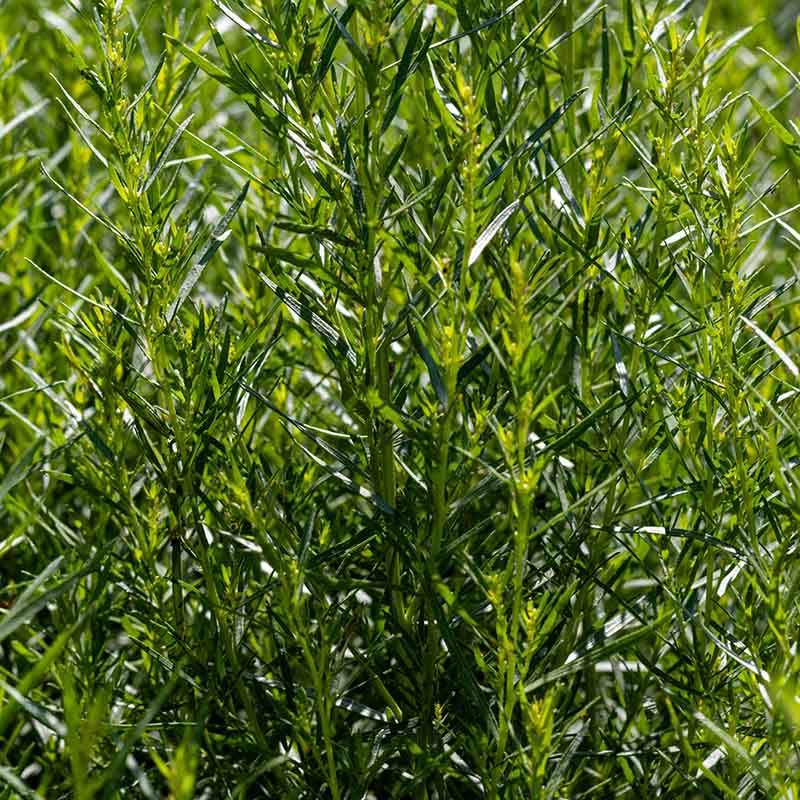
When displaced from frosty Siberia to the mild regions of Europe, tarragon thrived. French tarragon is the best tarragon variety for cooking and a favorite with chefs and foodies worldwide. If a recipe mentions “tarragon” as an ingredient, it means the French variety 99% of the cases.
French tarragon has a very strong and exciting flavor. Its fragrance bestows a delicious aroma on any dish it touches. The herb is also fairly good at retaining its flavor.
However, the plant is temperature-sensitive and requires good care. So it is no easy task to grow it in your garden. It also produces no fertile seeds, so you may have difficulties propagating the herb.
Beware that French tarragon is substantially similar to the inferior Russian variety in appearance. Therefore, you should choose a reliable herb trader and check your purchase carefully.
Russian Tarragon
Many people refer to Russian tarragon as “fake” while it is actually the ancestor of the fine French type. The herb can be found in Siberia and Central Asia and is part of local cuisines.
But Russian tarragon doesn’t have a nice flavor. It is much more feeble in aroma and bitter in taste than French tarragon. Even worse, it is prone to losing flavor quickly to heat.
So herb lovers unsurprisingly scorn it. That being said, Russian tarragon is good at flavoring beverages and vinegar, especially in the areas where it comes from. Besides, the plant is very easy to grow and can be cultivated from seeds.
You can confuse Russian tarragon with the identical-looking premium French one. But there is a sure way to avoid that mistake: bruise the leaves. French tarragon will release a powerful scent while the Russian stuff won’t.
Mexican Tarragon
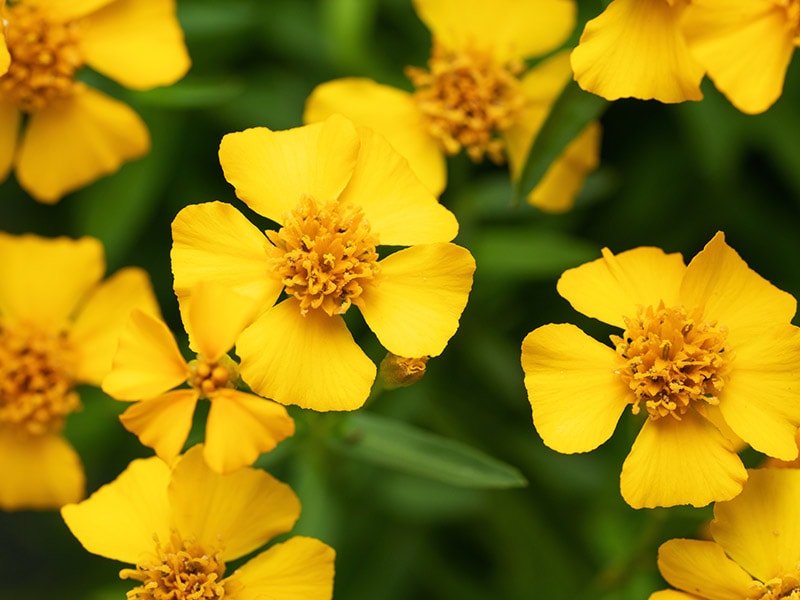
If you are suffering from a lack of French tarragon, there is a viable alternative to try. It is called Mexican tarragon, or Spanish tarragon, originally from Central America.
Mexican tarragon has the same pungent and powerful smell and taste as the French variety. It is also excellent at retaining its flavor when exposed to heat. All in all, you can find a wonderful substitution in Mexican tarragon.
Still, it isn’t as popular as its European cousin. One reason is that it’s not really tarragon; the plant is more related to marigolds. Besides, it lacks the connection with superb French cooking.
Anyway, Mexican tarragon is still an interesting herb you should use. The herb isn’t as fussy as French tarragon, and it has brilliant gold flowers that will be a nice decoration to your garden.
You can grow this plant from seeds but take care not to buy those of Russian tarragon. They look very much alike. Unfortunately, there is no way to tell them apart visually.
Diversify Your Menu With These Dazzling Tarragon Recipes
Regardless of the forms, tarragon is a cool condiment to many dishes. So allow me to introduce some tarragon-themed recipes for you to enrich your meals.
You can prepare them with either fresh tarragon or the dried variety, although the former is more preferable. Don’t forget the 3:1 equation.
French Chicken Tarragon
A classic dish to go with tarragon is sauteed chicken breasts. Infused with the savory, fatty taste of butter and spices, they become even more delicious with the right amount of creamy tarragon sauce.
Although you can go for chicken tenderloin as well, the clear disparity between chicken breast and chicken tenderloin might mean your dish might not taste as good. So only opt for chicken tenderloin when you’re out of chicken breast in your home.
It only takes you 3 minutes to learn how to make French tarragon chicken.
Tarragon Shrimp Pasta
A dish of fresh and eggy pasta is a decent meal, but you can make it decadent with some shrimp and creamy tarragon sauce. Just a few more extra steps, and in front of you will stand a bowl of tempting, smoking, hunger-provoking pasta.
Dried tarragon tends to work better on this dish.
Tarragon Asparagus Salad
The incredible flavor of asparagus and tarragon will make eating greens easy. Spoon some tarragon sauce over any vegetables, and you won’t have enough of them. Asparagus is a great hangover cure (2) so add this dish to your post-party breakfast.
Bearnaise Sauce
Bearnaise is one of the finest sauces in French haute cuisine, which says a lot. It is made from clarified butter, egg yolks, vinegar, and the indispensable tarragon. But make your pick: fresh tarragon imparts a stronger flavor to your sauce, while dried tarragon blends better with the mix.
Tarragon Vinegar
If you dislike dried tarragon but want to enjoy fresh tarragon’s fragrance whenever you want, tarragon-infused vinegar is a great alternative. It’s bursting with the unique aroma of tarragon. You can drizzle the vinegar over salads and veggies to enhance the flavor.
You will find making tarragon vinegar a piece of cake.
FAQs
Let’s take a look at the following questions that people usually ask about the fresh and dried varieties of tarragon.
Fresh Or Dried: What Is It Going To Be?
For all their differences, fresh tarragon and dried tarragon are like yin and yang. They are opposite to each other, but they are also one and the same. So don’t be afraid to experiment with them in your cooking.
I hope this post has provided you with useful information about all forms of tarragon. If you think so, too, please do me the honor of sharing this post with your friends. Also, it would be great if you could share your thoughts and opinions. Thank you very much!
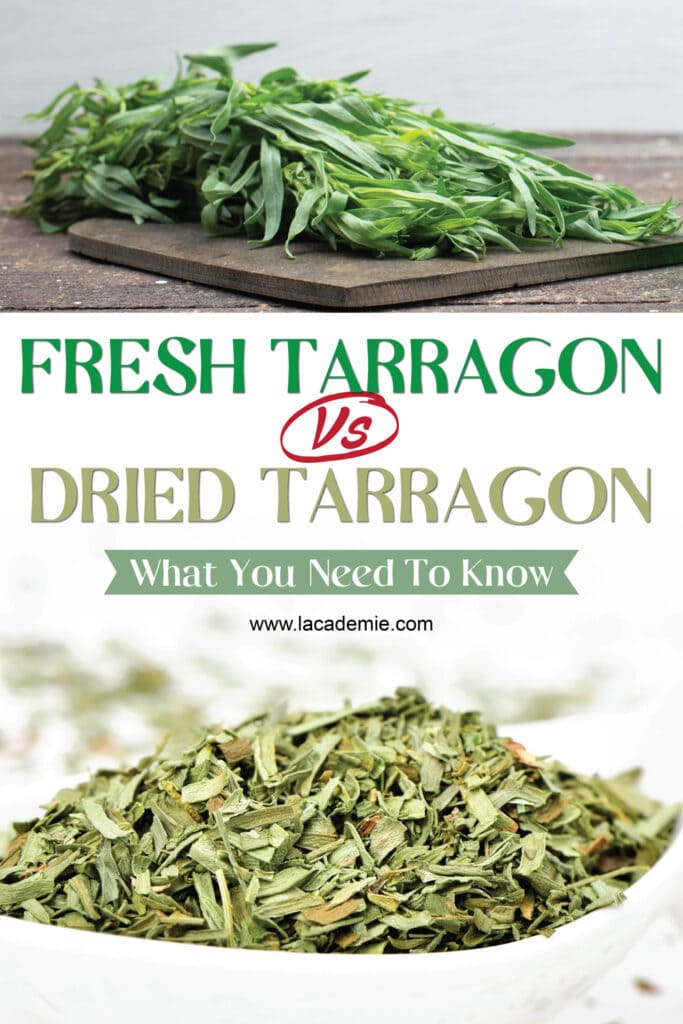
Reference
- Encyclopedia Britannica. 2022. tarragon | herb.
- Medicinenet.com. 2022.

